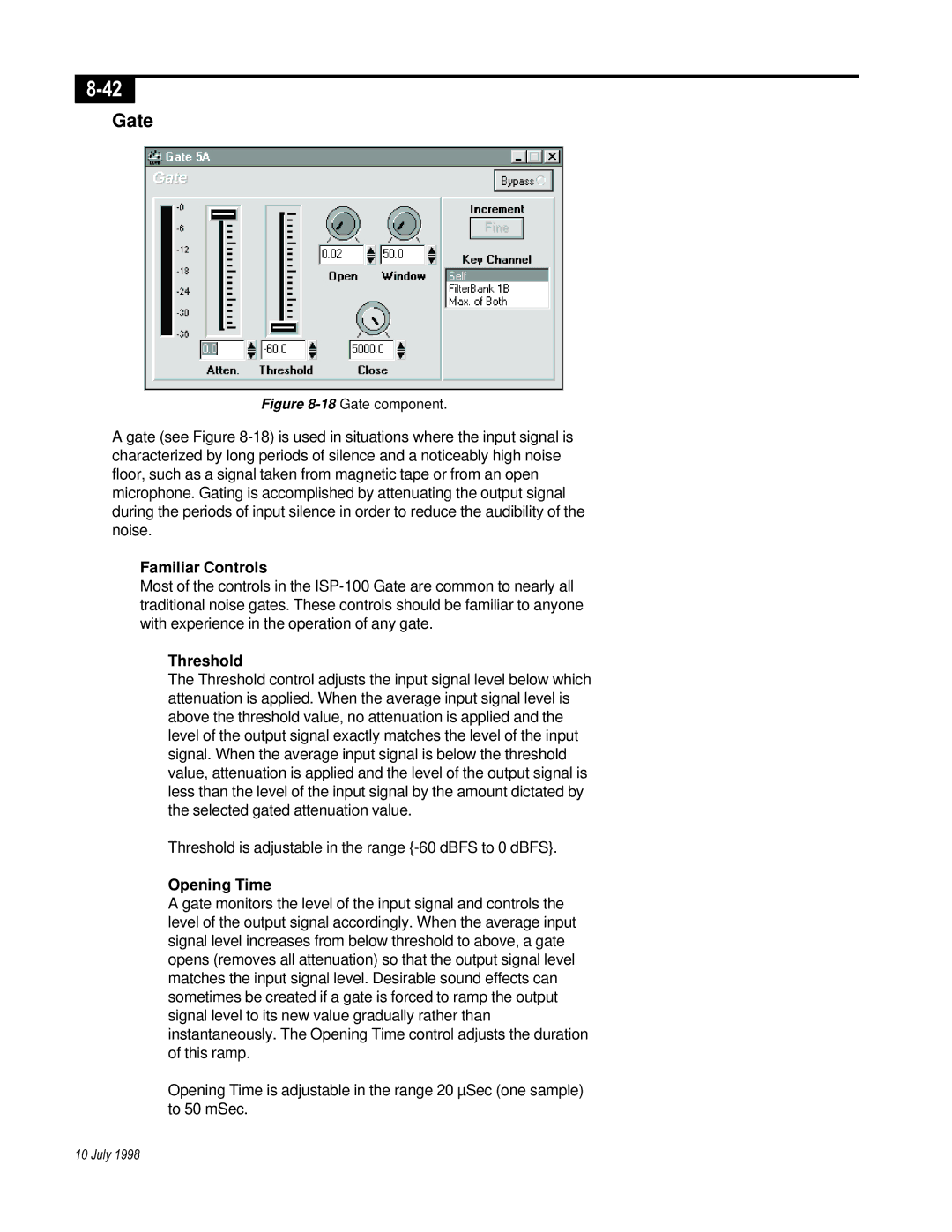
Gate
Figure 8-18 Gate component.
A gate (see Figure
Familiar Controls
Most of the controls in the
Threshold
The Threshold control adjusts the input signal level below which attenuation is applied. When the average input signal level is above the threshold value, no attenuation is applied and the level of the output signal exactly matches the level of the input signal. When the average input signal is below the threshold value, attenuation is applied and the level of the output signal is less than the level of the input signal by the amount dictated by the selected gated attenuation value.
Threshold is adjustable in the range
Opening Time
A gate monitors the level of the input signal and controls the level of the output signal accordingly. When the average input signal level increases from below threshold to above, a gate opens (removes all attenuation) so that the output signal level matches the input signal level. Desirable sound effects can sometimes be created if a gate is forced to ramp the output signal level to its new value gradually rather than instantaneously. The Opening Time control adjusts the duration of this ramp.
Opening Time is adjustable in the range 20 µSec (one sample) to 50 mSec.
